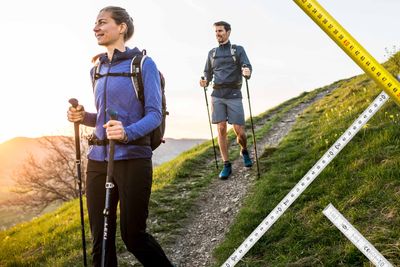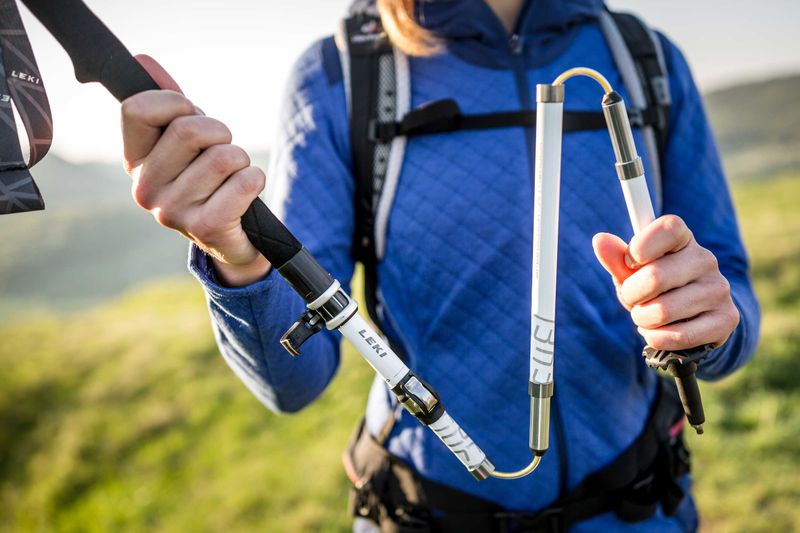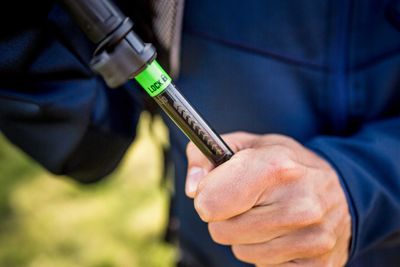Contents
Calculating the right length for hiking poles
Since hiking poles are often used in steep terrain, adjusting them to the right length is not quite as trivial as, for example, with cross-country skiing or ski poles. Especially on mountain tours, the pole length should be readjusted on steep uphill and downhill passes. For this reason, folding and telescopic poles, which can be adjusted in length in just a few steps, are particularly popular with mountaineers.
>> Adjustable hiking and trekking poles
Find the basic setting with our pole length configurator
Fortunately, however, there is also a basic setting for hiking poles with which every tour can be started and to which you should always return on flat passages. With our pole length configurator for hiking poles you can easily calculate this length:
90° rule: How to find out if the length is right for you

Caution: Always pay attention to the locking mechanism!
Downhill, by far the most weight rests on the poles. No wonder, since many hikers want to protect their knees as much as possible when going downhill. However, it is important to always make sure that the locking mechanism of the pole is properly closed before descending. Poles that cave in when going downhill hold an enormous potential for injury, and even falls in steep terrain are often due to collapsing hiking poles. Therefore, the following also applies here in particular: Pay attention to material fatigue!
Foldable or telescopic poles: More than just a matter of taste
It should be obvious that fixed-length poles are at a disadvantage in mountainous terrain. But there are also clear differences when comparing foldable and telescopic poles. On the one hand, foldable poles are usually significantly more expensive due to their more complex construction. However, most models can be conveniently stowed in the backpack and do not have to be lashed to the outside of the backpack. Especially on via ferrata, this is an unbeatable advantage! In addition, high-quality folding poles can not virtually sink in due to the construction. Telescopic poles, on the other hand, are characterized by a slightly higher stiffness and are often quicker to adjust in length. Ultimately, it depends on your wallet and the terrain in which you want to hike. For extreme steep passages or tours with climbing sections, we recommend foldable poles.
Carbon or aluminum? A matter of debate
While there are clear advantages and disadvantages when comparing folding and telescopic poles in different circumstances, there are fewer differences when it comes to the material used. Of course, carbon poles are lighter than their aluminum counterparts. But whether this justifies the significantly higher price is something everyone must decide for themselves - especially since aluminum is also one of the lightest metals on the market.
(Photos: LEKI)



